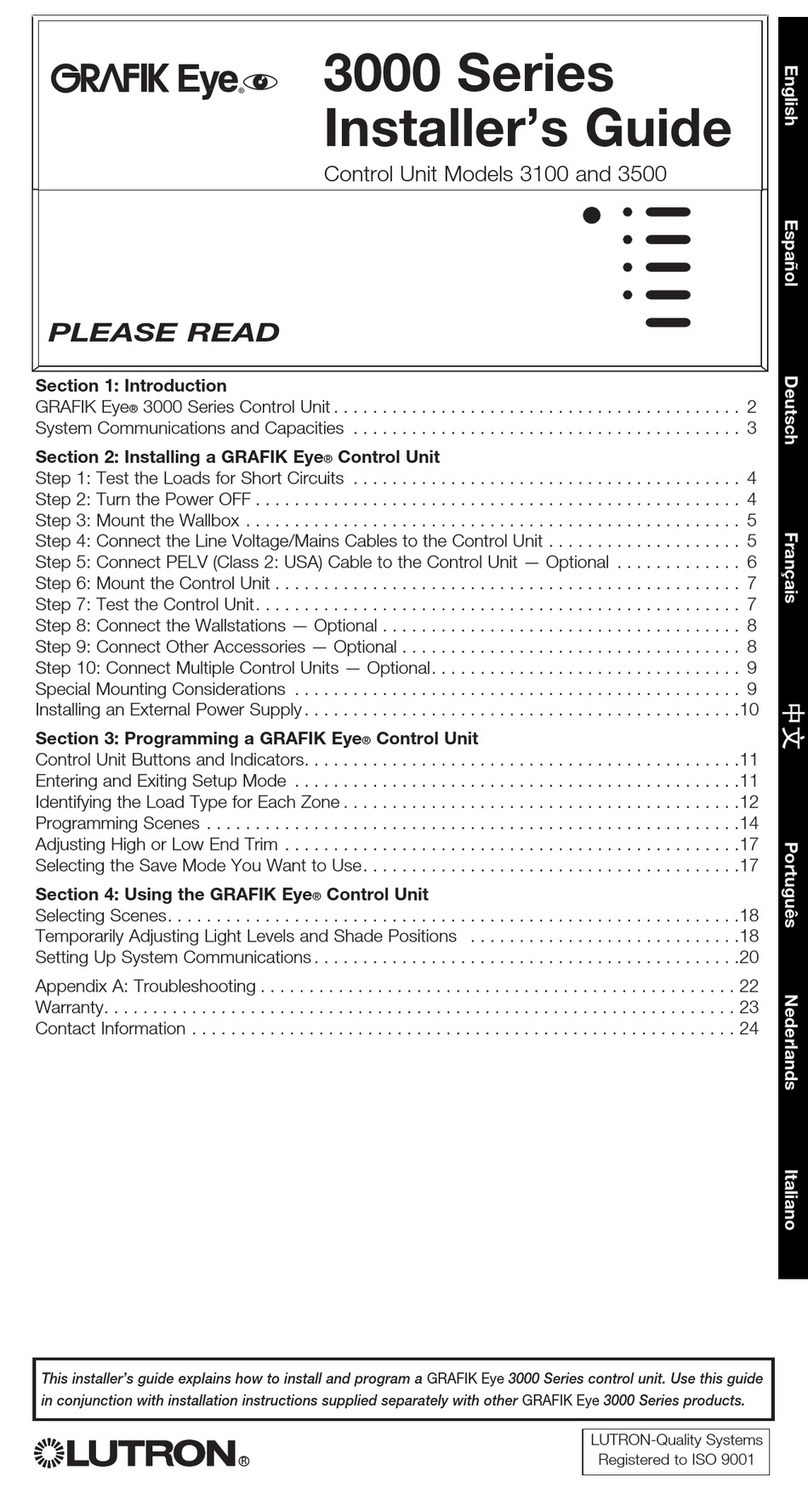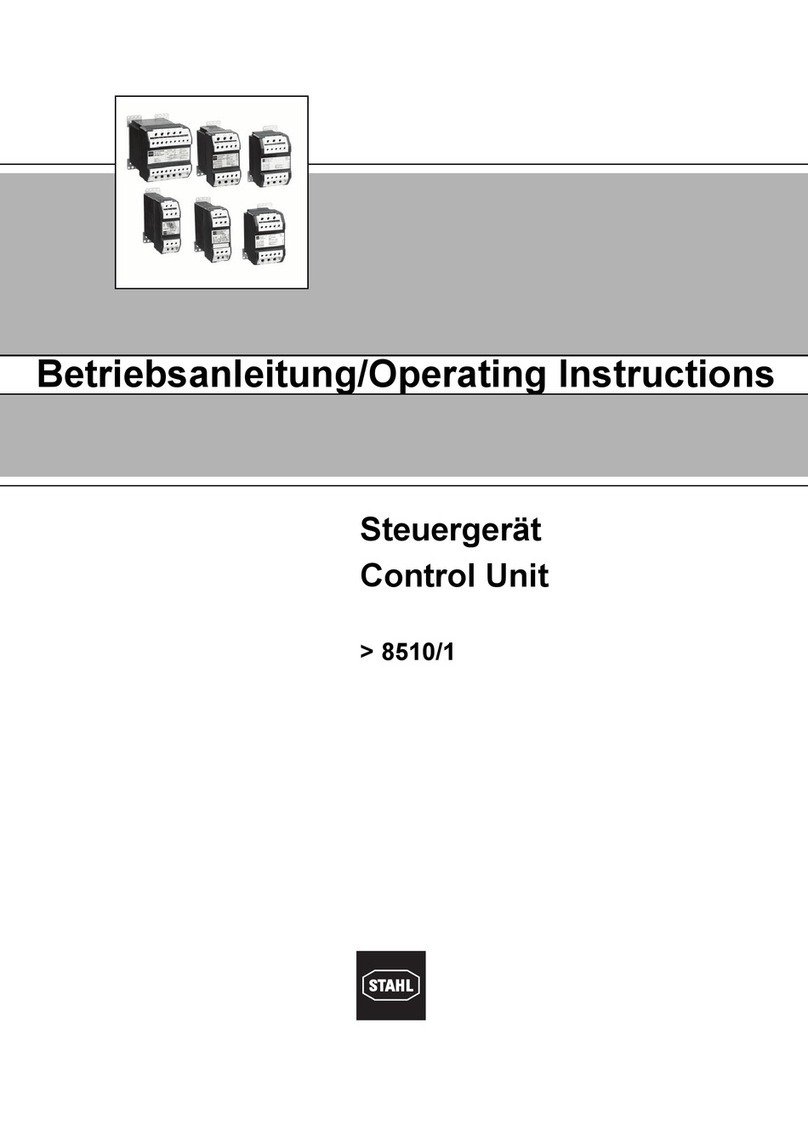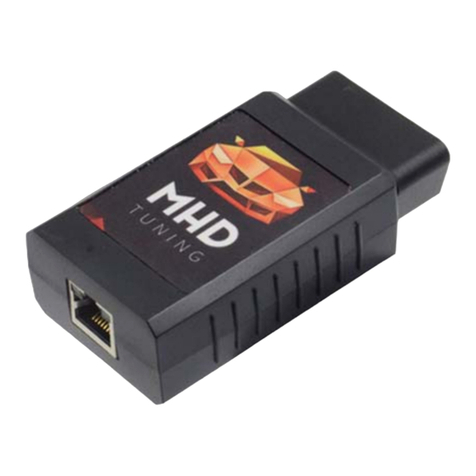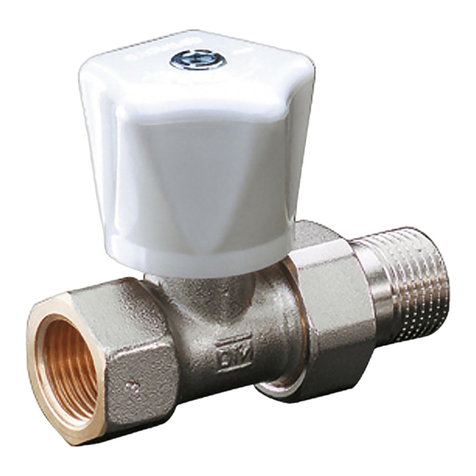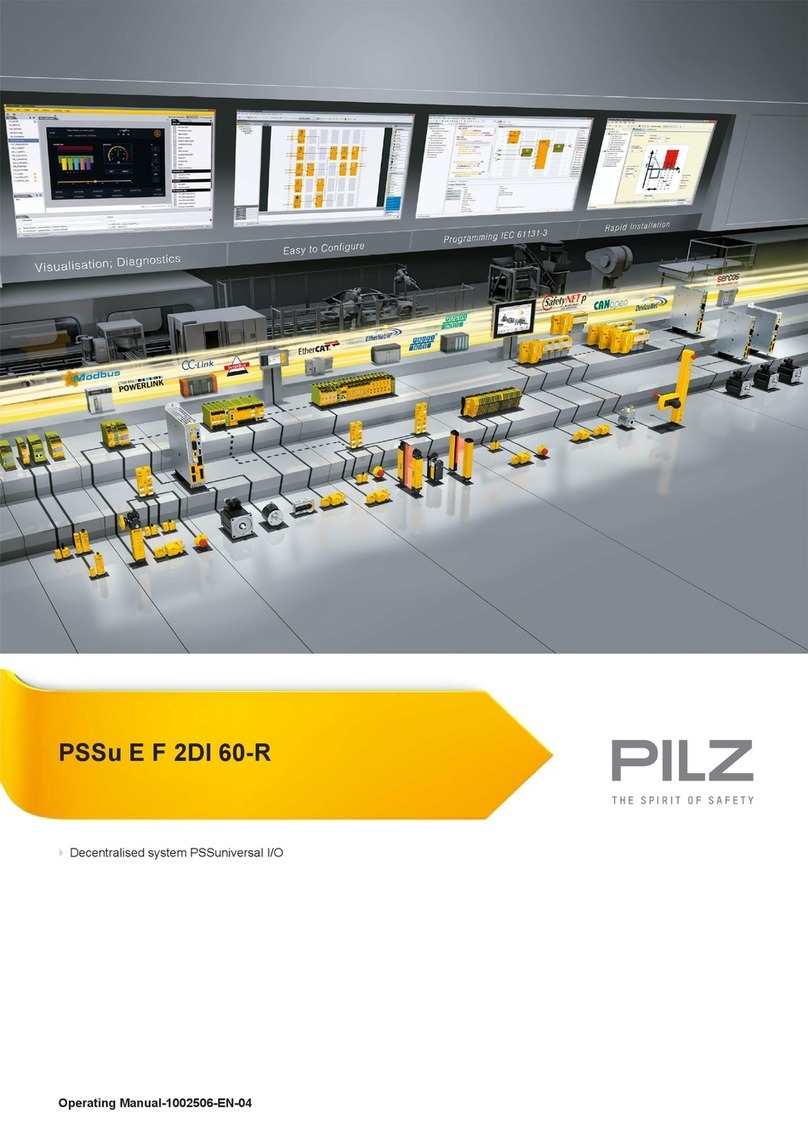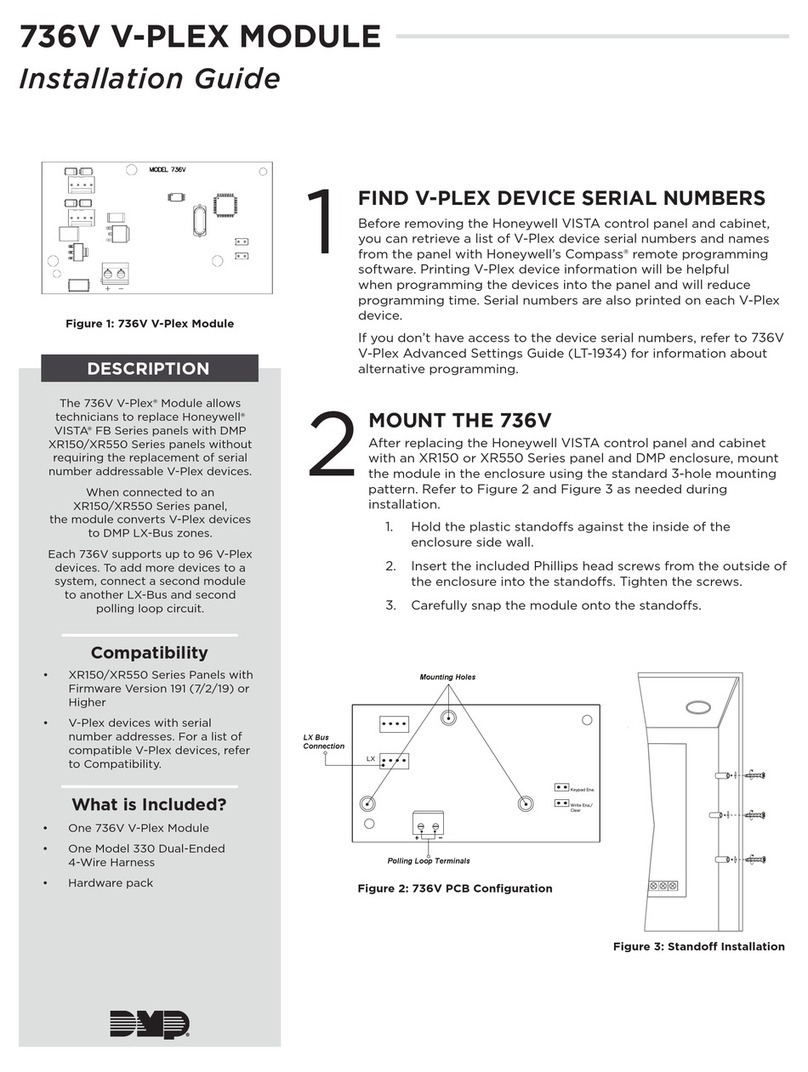Grafik Eye 3100 Assembly instructions

○○○○○○○○○○○○○○○○○○○○○○○○○○○○○○○○○○○○○○
○○○○○○○○○○○○○○○○○○○○○○○○○○○○○○○○○○○○○○
○○○○○○○○○○○○○○○○○○○○○○○○○○○○○○○○○○○○○○
○○○○○○○○○○○○○○○○○○○○○○○○○○○○○○○○○○○○○○
○○○○○○○○○○○○○○○○○
GRAFIK Eye 3000
Series Control Units
supply power to, and control
the brightness of two, three,
four, or six zones of lighting.
GRAFIK Eye Control Units
control the intensity of all the
light sources in a room. You
can adjust the lights for a
special event or activity with
the press of a button!
○○○
LIGHTING CONTROL
○○○○○○○○○○○○○○○○○○○○○○○○○○○○○○○○○○○○○○
○○○○○○○○○○○○○○○○○○○○○○○○○○○○○○○○○○○○○○
○○○○○○○○○○○○○○○○○○○○○○○○○○○○○○○○○○○○○○
○○○○○○○○○○○○○○○○○○○○○○○○○○○○○○○○○○○○○○
LUTRON
LUTRON
PLEASE LEAVE FOR OCCUPANT
3000 Series
Installer’s Guide
Models 3100 and 3500
IMPORTANT! GRAFIK Eye lighting controls must be installed by a qualified electrician in accordance with all applicable
regulations. Improper wiring can result in personal injury or damage to GRAFIK Eye lighting controls or other equipment.
Always turn off circuit breaker/MCB or remove main fuse from power line before doing any work. To avoid overheating and
possible damage to equipment, do not install dimming devices to dim receptacles, motor-operated appliances, or
fluorescent lighting not equipped with Lutron Hi-lume®, Eco-10™, or Tu-Wire™Electronic Dimming Ballasts. In dimmed
magnetic low-voltage circuits, you can prevent transformer overheating and failure by avoiding excessively high current
flow: Do not operate GRAFIK Eye lighting controls with any lamps removed or burned out; Replace any burned out lamps
immediately; Use only transformers that incorporate thermal protection or fused primary windings. This lighting control is
designed for residential and commercial use. GRAFIK Eye Controls are designed for indoor use only.

Do you have: Then read this . . . . . . on page:
Control Unit only? STEP 1: Installing 3000 Series Control Units 3
Follow Step 1 and Step 3 How to wire and mount GRAFIK Eye 3000 Series Control Units.
Wallstations too? STEP 2: Installing Wallstations 4
DIP switch address settings, wiring, and mounting.
STEP 3: Setting Up Control Units 6
Identifying load types and setting up lighting scenes.
STEP 4: Setting Up System Communications 10
Assigning Wallstations to the Control Units they should operate.
Questions about Appendix A: More about Class 2/PELV Wiring 12
Class 2/PELV wiring?
Appendix B: Special Mounting Considerations 14
Appendix C: Power Boosters, 14
Electronic Low Voltage Interfaces,
and Fluorescent Dimming Ballast Interfaces
Appendix D: GRX-TVI 0-10 Volt Ballast Interface 15
Appendix E: HP 2•4•6 Dimming Modules 17
Appendix F: Infrared Controls 18
Problems? Appendix G: Troubleshooting 18
LUTRON-Quality Systems
Registered to ISO 9001
Page 2
Questions? Need technical assistance?
Phone Assistance . . . Worldwide!
■In the U.S., Canada and the Caribbean:
1-800-523-9466
■In Mexico, Central and South America:
1-610-282-3800
■In Japan: 03-5405-7333
■In Hong Kong: 2104-7733
■In the U.K.: 0800-282-107
■In Europe: 44-171-702-0657
■All others: 1-610-282-3800
■Website address: www.lutron.com
■E-mail: [email protected]
Warranty
Lutron warrants each new unit to be free from defects in materials and workmanship and to perform under normal use and service. This
warranty shall run only for a period of one year from the date of purchase and Lutron's obligations under this warranty are limited to
remedying any defect or replacing any defective part and shall be effective only if the defective unit is shipped to Lutron postage prepaid within
12 months after purchase. Damage due to abuse, misuse, inadequate wiring or installation is not covered by this warranty. In no event shall
Lutron or any other seller be liable for any other loss or damage, including consequential or special damages that may arise through the use
by a purchaser or others of this device and the purchaser assumes and will hold harmless Lutron in respect of all such loss. Although every
attempt is made to ensure that catalogue information is accurate and up-to-date, please check with Lutron before specifying or purchasing this
equipment to confirm availability, exact specifications and suitability for your application. This product may be covered by one or more of the
following U.S. patents: 4,797,599; 4,803,380; 4,825,075; 4,893,062; 5,030,893; 5,191,265; 5,430,356; 5,463,286; 5,530,322; 5,808,417;
DES 308,647; DES 310,349; DES 311,170; DES 311,371; DES 311,382; DES 311,485; DES 311,678; DES 313,738; DES 335,867; DES
344,264; DES 370,663; DES 378,814 and corresponding foreign patents. U.S. and foreign patents pending. Lutron, GRAFIK Eye, and Hi-lume
are registered trademarks; Hi-Power, Eco-10, LIAISON, Designer, Tu-Wire, and Architrave are trademarks of Lutron Electronics Co., Inc. ©
1999 Lutron Electronics Co., Inc.
®
Safety standards listed above apply to one or more products in the GRAFIK Eye product line. Consult factory for specific information.

230V
˜
LUTRON
50/60Hz
LOADPERZONE:40- 800W
MAXUNITLOAD:10A, 2300W
PresetLightingControl
LIVETERMINALSAT REAR
DONOTWIRELIVE
U.K.071-702-0657
U.S.A. (610) 282-3800
COOPERSBURG,PAUSA18036
GRX-3104-CE
UP
MadeinU.S.A.
12V
SELVOUTPUT
!
CBE5
145-049
GRX-Z
Page 3
HOT/LIVE SWITCH
LOAD
NEUTRAL
STEP 1: Installing Control Units
This section shows how to install Control Units and make sure they are properly operating all connected loads.
CAUTION!
First test loads for short circuits.
1. Turn power OFF at the breaker/MCB panel or fuse box.
2. Connect standard light switch between live lead and the load wire to test circuit.
3. Turn power on and check for short or open circuits: If load does not operate, circuit is open. If the
breaker/MCB trips (fuse blows or opens), circuit is shorted. Correct short or open circuits and test
again.
Load Types
The Control Units can control incandescent, halogen (tungsten), magnetic low-voltage, and neon/cold cathode load types. Electronic low-
voltage and fluorescent load types can be controlled with an appropriate interface.
■Not all zones need to be connected; however, connected zones must have a load of at least 25W (40W for AU and CE models).
■No zone may be loaded with more than 800 W (1200 for AU models).
■Unit must not carry more than 16A of total lighting load (10A for CE models).
■All Electronic Low-Voltage (ELV) lighting used with the Electronic Low-Voltage Interface must be rated for reverse phase-control
dimming. Before installing an ELV light source, verify with the manufacturer that their transformer can be dimmed. When dimming, an
Electronic Low-Voltage Interface MUST be used with the Series Control Unit.
Installation instructions. First, turn power off.
Preparation
1. Mount Wallbox. Use standard U.S. wallbox, 3 1/2 in. (87 mm) deep is strongly
recommended, 2 3/4 in. (68 mm) deep minimum. Always allow at least 4 1/2 in. (110 mm)
clearance above and below the faceplate to ensure proper heat dissipation.
2. Pull Wires. Use the rearmost knockouts when pulling wires into the wallbox. This will
provide the most clearance when mounting the Control Unit.
3. Remove Cover. Remove the Control Unit’s cover and hinged faceplate by pulling outward at
each corner.
Model Wallbox Size/Max. Unit Load
Number 100-127V 230V 220-240V
3102/3502 2-Gang U.S†/1200W/VA 4-Gang U.S†/10A 2-Gang U.S/1600W/VA
3103/3503 3-Gang U.S†/1500W/VA 4-Gang U.S†/10A 3-Gang U.S/2400W/VA
3104/3504 4-Gang U.S†/2000W/VA 4-Gang U.S†/10A 4-Gang U.S†/3000W/VA
3106/3506 4-Gang U.S†/2000W/VA 4-Gang U.S†/10A 4-Gang U.S†/300W/VA
† Lutron P/N 241-400.
Line Voltage/Mains Wiring
IMPORTANT WIRING NOTES!
■Use properly certified cable for all line voltage/mains cables and
Class 2/PELV cables.
■In Europe, acceptable types of cable include HAR certified cable
with insulated cores enclosed in a sheath. This cable must bear the
appropriate certification mark pertaining to national wiring rules for
fixed installations. If certified cable with insulated cores enclosed in
a sheath is used for the Power cables, the Class 2/PELV wiring can
be any of the specified cables in Appendix A: More about
Class 2/PELV Wiring.
■Proper short-circuit and overload protection must be provided at
the distribution panel. You can use up to a 20A (16A for AU, and
10A for CE models) maximum circuit breaker/MCB or equivalent
(tripping curve C according to IEC60898/EN60898 is
recommended) with adequate short-circuit breaking capacity for
your installation.
■Install in accordance with all local and national electrical codes.
■CAUTION! Do not connect line voltage/mains cable to Class 2/
PELV terminals.
■Earth/Ground terminal connection must be made as shown in
wiring diagrams.
■Do not mix different load types on the same zone!
■Fluorescent and electronic low voltage loads require
interfaces. Zone loads that exceed 800W/VA (1200W/VA for
AU models) and total unit loads that exceed the unit capacity
require power boosters. Refer to Appendices C, D, E, and F.
Wire the Control Unit (see Page 16)
1. Strip 1/2 in. (12 mm) insulation from all wires in wallbox and
connect them to appropriate terminals on the back of the
Control Units. The recommended installation torque is 9.0
in.●lbs. (1.0 N●m) for line voltage connections and 10 in.●lbs.
(1.3 N●m) for the earth/ground connection. Each power
terminal can accept up to two #12 AWG (2.5 mm2) wires. (Does
not apply to Class 2/PELV terminal block.)
3.5 in. (87 mm) DEEP RECOMMENDED

Class 2/PELV Wiring
M S
FADE TEMPORARY
MASTER
ZONES
ZONE 5 ZONE 6ZONE 3 ZONE 4ZONE 1 ZONE 2
Scene 1
button
OFF
Zone intensity raise and lower
buttons Scene 1 LED
Page 4
1
2
3
4
LINE VOLTAGE/MAINS CABLE
CLASS 2/PELV
TERMINAL
CLASS 2/PELV CABLE
1.0 in. (25 mm)
3/8 in.
(9.5 mm)
LINE VOLTAGE/MAINS CABLE
1. Mount as shown using the four screws provided. (When mounted in
the wallbox, the Class 2/PELV cable and terminal block should
remain separated from the line voltage/mains cables.)
2. Reattach the faceplate to the Control Unit by pushing inward at each
corner.
Testing: Do the lights work?
IMPORTANT WIRING NOTES!
Review Appendix A BEFORE wiring!
■Wallstations must be installed by a qualified electrician.
■Wallstations use Class 2 or PELV wiring methods as applicable in your
locale.
—Using Class 2 wiring methods: Wallstations must be connected in
accordance with the 1996 National Electrical Code, Article 725-54(a),
(1) Exception No. 3 or the Canadian 1994 CE Code Handbook, Rule
16-212, Subrule (4). Check with your local electrical inspector to
comply with local codes and wiring practices.
—Using PELV wiring methods: Wallstations that are connected to
terminals 1—4 must always meet the requirements of DIN VDE 0100
Part 410 and IEC 60364-4-41 for PELV circuits. See “What is PELV?”
in Appendix A.
■Wallstations must be mounted in a wallbox. Please refer to instruction sheet
included with each Wallstation to determine wallbox requirements.
■Note that the NTGRX-1S can use line voltage/mains branch circuit wiring.
Refer to the installation instructions packaged with the Wallstation.
Connect Class 2/PELV wiring
only if your project has Wallstations
and/or more than one Control Unit
.
Use recommended cable as specified in Appendix A: More About
Class 2/PELV Wiring.
Wiring Note
■Use the rearmost knockouts when pulling wires into the wallbox.
This will provide the most clearance when mounting the Control
Unit.
1. Strip 1 in. (25 mm) of insulation from the Class 2/PELV cable.
2. Strip 3/8 in. (8 mm) of insulation from each wire.
3. Connect the Class2/PELV wires to the Class 2/PELV
terminal block. Make sure no bare wire is exposed after
making connections. The recommended installation torque is
3.5 in.●lbs. (0.4 N●m) for Class 2/PELV connections.
4. The Class 2/PELV cable and terminal block should be separated
from line voltage/mains cables by at least 1/4 in. (7 mm).
Mounting
1. Restore Power.
2. Press Scene 1 button on front of the GRAFIK Eye Control
Unit. The Scene 1 LED will light.
3. Press zone 55
55
5or 66
66
6to raise or lower the light levels. Make
sure that the Control Unit is dimming all connected loads. Refer
toAppendix G: Troubleshooting, or call Lutron.
STEP 2: Installing Wallstations Examples of Wallstations
NTGRX-2B-SL Entrance/Special Function Control
NTGRX-4S Scene Selection Control with Raise/
Lower
NTGRX-4S-IR Scene Selection Control/Infrared
Receiver
NTGRX-4B Scene Selection Control
NTGRX-4M Master Control
NTGRX-4PS Partition Control
GRX-CIR* Infrared Ceiling Receiver
GRX-4S-DW* ArchitraveTM Door Jamb Control
GRX-AV* Interface Control
GRX-RS232* RS-232 Interface Control
GRX-PRG* Personal Computer Interface
GRX-IT/GRX-8IT Infrared Handheld Transmitter
(see Appendix C)
EGRX-4S* European Style 4S Control
EGRX-4S-IR* European Style 4S Control/Infrared
Receiver
. . . and more!

Page 5
56
56
56
56
56
56
1234
1
2
3
4
5
6
7
8
1234
9
10
11
12
13
14
15
16*
FOR THIS ADDRESS . . .
SET SWITCHES
LIKE THIS: RECORD LOCATION
AND TYPE OF
CONTROL HERE
SET SWITCHES
LIKE THIS: RECORD LOCATION
AND TYPE OF
CONTROL HERE
123456
1234
DIP SWITCHES 1—4
SET ADDRESS
567
567
567
567
567
567
567
567
Class 2/PELV
Terminal
Class 2/PELV Cable
123456
1
4
3
2
4
3
2
1
CU WIRE ONLY
USA: Class 2
IEC: PELV
CONTROL UNIT
WALLSTATION
Set DIP switches 1—4 with unique system address
Each Wallstation must have a
unique
system address
(1—16) to identify the Wallstation and enable it to
communicate with the Control Unit(s).
To set its address, set DIP switches 1—4 to one of
the configurations shown at right (GRX-PRG
automatically assumes address 16). Document your
assignments by noting each Wallstation’s address.
* Reserved for GRX-PRG, if present on link.
Set DIP switches 5, 6 and/or 7 to specify function
For most Wallstations, you must also set DIP switches to specify exactly how the Wallstation is to function. Please refer to the Instructions
shipped with each Wallstation for more detailed information.
NTGRX-4S, -4S-DW, -4S-IR, -CIR, -4B
Scene Selection Control
Switches 5 and 6 determine which scenes the unit will select:
Scenes Scenes
1 to 4 9 to 12*
Scenes Scenes
5 to 8* 13 to 16*
NTGRX-4M
Master Control
Switches 5 and 6 determine whether bottom button turns lights on
or off:
ON OFF
only only
NTGRX-2B-SL
Multi-Control
Switches 5, 6 and 7 determine the function of the unit’s two buttons:
Scene 1 Fine Tuning
and Off Control
Scene 9/ Partition
Scene 10* Status
Scene 13/ Zone
Scene 14* Lockout
Panic Sequencing
Control Scenes 5—16*
* When using a Wallstation to access scenes 5—16, the scene LEDs will illuminate only on the Wallstation—not on the GRAFIK Eye
Control Unit.
Turn off power and wire
Review Appendix A: More About Class 2/PELV Wiring
before proceeding!
1. Mount 1-gang U.S. wallbox*, 2 3/4 in. deep (68 mm)
minimum.
2. Strip 3/8 in. (9 mm) insulation from both twisted pairs in the
wallbox.
3. Connect two #18 AWG (1.0 mm2) twisted pairs for Class 2/
PELV wiring (daisy-chain between stations)†.
4. Confirm all connections.
Mounting
Place twisted pairs in wallbox and mount as shown. Restore power.
* Some Wallstations have special mounting considerations. Please
refer to the detailed instructions supplied with each Wallstation.
† If shielded wire is used, the drain wire must also be daisy-
chained. Do not connect drain wire to earth/ground or
Wallstation (unless a “D” terminal is present).

STEP 3: Setting Up GRAFIK Eye Control Units
Page 6
To enter setup mode: Press and hold the Scene 1 and OFF
button for about three seconds, until the scene LEDs start cycling.
To exit setup mode: Exit setup mode the same way you entered
it. Press and hold the Scene 1 and OFF button for about 3
seconds, until scene LEDs stop cycling. The Control Unit is out of
setup mode; back in normal operating mode.
In setup mode, the FADE window displays the setup codes. To
scroll through the menu of setup codes, press the FADE 5or
5buttons.
Identifying the load type for each zone
1. Enter setup mode. Press and hold Scene 1 and OFF buttons for
about 3 seconds, until scene LEDs cycle.
2. Check for LS in FADE window. (LS is the first code to appear
when you enter setup mode. For the LS mode, ZONE LEDs turn on
from top to bottom.)
3. Set each zone’s load type. Press ZONE 5and 5until
ZONE LEDs match the load type connected to each zone. Refer to
chart on next page.
4. Exit setup mode. Press and hold Scene 1 and OFF buttons for
about 3 seconds, until scene LEDs stop cycling.
In the 6-Zone Control Unit shown here:
■Zone 5 is set for incandescent or magnetic low-voltage.
■Zone 6 is set for neon/cold cathode.
This section shows how to set up a GRAFIK Eye Control Unit,
including:
■Identifying the load type for each zone of lighting
connected to the Control Unit.
■Setting up the scenes to create the desired lighting
effects, and make sure the Control Unit is working
correctly.
To set up the GRAFIK Eye Control Unit, enter the “setup
mode” and use the menu of setup codes that appear in the
FADE window. Step-by-step instructions for using the setup
codes are on the following pages.
How to enter and exit setup mode
The following is a list of the setup codes and their descriptions:
Code Stands for Description
Save Options Select from several save options (p.
9)
Sc Scene Set unaffected zones and set any of
the 16 scenes (p. 9)
A- Address Identify Control Units when setting
up system communications (p. 10)
LS* Load Select Identify load type (p. 7)
LE Low End Set low end trim (p. 8)
*When you enter setup mode, this code appears first.
■If you press FADE 5, you will see A-, Sc, then .
■If you press FADE 6, you will see LE.
Lutron ships GRAFIK Eye Control Units with all zones set for
incandescent/halogen (tungsten) lighting. If your project has non-
incandescent loads, change all non-incandescent zones to the
correct load type.
FADE TEMPORARY
MASTER
ZONES
ZONE 5 ZONE 6
M S
LS
3
2
1 4
,
SET EACH ZONE’S LOAD TYPE
CHECK FOR LS
ENTER (EXIT)
SETUP MODE
ZONE LEDs
FADE TEMPORARY
MASTER
ZONES
ZONE 5 ZONE 6
M S
LS
TO ENTER (EXIT)
SETUP MODE:
PRESS AND HOLD FOR
ABOUT 3 SECONDS
UNTIL LEDs CYCLE
(STOP CYCLING)
LEDs
SCROLL THROUGH SETUP CODES

How to set up lighting scenes
Page 7
FOR
THIS
LOAD
TYPE . . .
SET
THE
ZONE’S
LEDs
LIKE
THIS:
INCANDESCENT,
HALOGEN
(TUNGSTEN)
1. Set all zones connected to HP 2•4•6 Dimming Modules as shown—
no matter what load type they are (including non-dim or switching). The
HP 2•4•6 can be used to switch non-capacitive ballasts. To fine-tune
the dimming of these “HP-powered” zones, you must adjust high- and
low-end trim on the HP 2•4•6 Dimming Module as described in the
Instruction Sheet supplied with the unit. Do NOT use HP 2•4•6
Dimming Modules with generator-supplied line/mains voltage.
2. All electronic low-voltage (ELV) lighting used with the Electronic Low-
Voltage Interface (ELVI) must be rated for reverse phase control
dimming. Before installing an ELV light source, verify with the
manufacturer that their transformer can be dimmed. When dimming, an
ELVI MUST be used with the 3000 Series Control Unit.
3. Any zones set for Lutron Hi-lume or Eco-10 fluorescent lighting must have
GRX-FDBI or GRX-TVI Fluorescent Interfaces. Consult Lutron for more
information.
4. Please note that the Tu-Wire Compact Fluorescent, unlike other fluorescent load
types,does not require an FDBI interface. This load type is not available in
GRX-CE models.
5.Use non-dim for any lights to be switched on and off only—not dimmed (unless
using HP Dimming Module).
■Fluorescent non-dim loads with electronic or magnetic ballasts must: use a
GRX-TVI Interface
and
be set for non-dim mode, or use an HP 2•4•6
and
be set for HP 2•4•6 loads.
What is a scene?
* The S and M indicators under the FADE window show
whether FADE is “M”inutes or “S”econds. To set FADE in
minutes, you press FADE 5to scroll through 1—59
seconds . . . the M lights. FADE is now expressed in minutes.
To get back to seconds, press FADE 6until the window
shows “S”econds.
Note: Control Unit must be in mode. See page 9 for more
information regarding Save Options.
To set up scenes 1 through 4:
1. Select a scene. Press the Scene button for the scene you want to
adjust. (First button for Scene 1, second button for Scene 2, and so
on.) Note that the last button is the “Off” Scene. You do not set
intensities for this button.
2. Set each zone’s light levels. Press ZONE 5and 5to adjust
each ZONE to the right visual intensity for this scene. (ZONE LEDs
show intensity bargraph-style. Each LED represents ~ 15% intensity
change. In this example, ZONE 6 is set to 60%.) To program scenes 5
through 16, or for more precise zone intensity adjustment with a
GRAFIK Eye 3500 Control Unit, refer to page 8.
3. Set scene’s FADE-in time. Press FADE 5and 5to make
FADE-in time anything from 0—59 seconds or 1—60 minutes*. (A
scene’s FADE-in time is how long it takes light intensities to adjust to
their new levels when the scene is selected.)
Repeat this process to set up each of the remaining scenes. Note that you
can also set up a “FADE-to-off” time. Press the OFF button and adjust
FADE as desired.
Scenes are the preset light levels and fade times stored in the Control
Unit. To create a scene, set the appropriate intensity for each ZONE. To
recall a scene, simply press one of the buttons. The first button calls up
Scene 1; the second, Scene 2; and so on. The last button turns lights Off.
For example, typical scene settings for a living room might be:
LIGHT LEVELS FOR ZONES
ACTIVITY Cove Hanging Down
SCENE OR EVENT Lights Lights Lights Sconces
1 General use 70% 10% 20% 20%
2 Entertaining 80% 25% 90% 40%
3 Reading 10% 60% 40% 0%
4 TV 20% 0% 30% 20%
Scenes 1—4 can be selected on the Control Unit. However, all Control
Units are capable of storing up to 16 scenes. Scenes 5 through 16 can be
selected using Wallstations.
MAGNETIC
LOW VOLTAGE HP 2•4•6
LOADS1
(120V SUPPLY
ONLY)
ELECTRONIC
LOW VOLTAGE2Hi-lume®
OR Eco-10™
FLUORESCENT3
TU-WIRE™
COMPACT
FLUORESCENT4
NEON/COLD
CATHODE NON-DIM5
(LAST ON, FIRST
OFF)
NON-DIM5
(FIRST ON, FIRST
OFF)
FADE TEMPORARY
MASTER
ZONES
ZONE 5 ZONE 6
ZONE
M S
1
3
2
SET THE LIGHT LEVELS OF ALL ZONES
SET SCENE’S FADE-IN TIME
SELECT A
SCENE
FADE TEMPORARY
MASTER
ZONES
ZONE 5 ZONE 6
M S
SCENE 1
SCENE 2
SCENE 3
SCENE 4
OFF

Page 8
How to adjust light levels temporarily
How to set low-end trim—OPTIONAL
If necessary, adjust the low-end trim to achieve uniform low-
intensity dimming and to eliminate flicker (especially with neon/
cold-cathode and fluorescent loads).
1. Enter setup mode. Press and hold Scene 1 and OFF
buttons for about 3 seconds, until scene LEDs start cycling.
2. Select LE (for low end) by pressing FADE 6once. All
zones go to their lowest possible dim levels and only their
bottom LED is lit*.
3. Adjust zone’s lights for low-end trim. Use ZONE 6
and 5to dim the zone’s lights as much as possible without
causing flicker. This setting becomes the “optimum lowest
level” to which the zone will dim before going off. Repeat this
process for any other zones that require low-end trim.
4. Exit setup mode. Press and hold Scene 1 and OFF buttons
until scene LEDs stop cycling.
Note: The ZONE LED bargraph does not change while you
make low-end trim adjustments. The bargraph remains
set to its lowest level in this mode.
Advanced Scene Programming Options—OPTIONAL
Control Unit must be in either or mode. See page 9 for
more information regarding Save Options.
To adjust an entire scene:
Press the appropriate scene button.
Press MASTER 5or 6to raise or lower the intensity of all
zones.
To adjust a zone:
If the TEMPORARY LED is not already lit, press the
TEMPORARY ZONES button. The TEMPORARY LED above the
TEMPORARY ZONES button will light.
Press ZONE 5or 6to adjust any zone’s intensity.
Note: These adjustments are temporary and remain only until a
new scene selection occurs—the GRAFIK Eye Control
Unit does not store them as permanent scene settings.
* Except zones set for non-dim. For these, all zone LEDs are lit, and you
cannot adjust the low-end trim.
ZONE 1 ZONE 2
M S
Sc
2
3
41
FADE TEMPORARY
MASTER
ZONES
5
6
,
SELECT FLASHING Sc/I
SET SCENE’S
FADE-IN TIME
SELECT
SCENE
ENTER (EXIT)
SETUP MODE
ADJUST ZONE
INTENSITY
FADE TEMPORARY
MASTER
ZONES
ZONE 5 ZONE 6
M S
LE
3
2
14
,
ADJUST ZONE’S LIGHT FOR LOW-END TRIM
SELECT LE
ENTER (EXIT)
SETUP MODE
FADE TEMPORARY
MASTER
ZONES
ZONE 5 ZONE 6
M S
TEMPORARY
LED
MASTER
RAISE/
LOWER
SCENE
BUTTONS
ZONE INTENSITY
RAISE/LOWER
BUTTONS
Programming Scenes 5 through 16.
1. Enter setup mode. Press and hold Scene 1 and OFF
buttons about 3 seconds until scene LEDs start cycling.
2. Select Sc (the code for scene setup) by pressing FADE
twice. Sc and I(for Scene 1) will alternately flash in the FADE
window.
3. Select scene. Press MASTER 5or 6to select the
scene to be programmed.
4. Adjust ZONE-intensity.
3100 - Press ZONE 5or 6to adjust zone’s
intensity.
3500 - Press ZONE 5or 6to display exact
percentage light output. Press again to adjust
light levels in 1% increments.
5. Set scene’s FADE-in time. Press and hold the
TEMPORARY ZONES button. The current FADE-in time is
displayed. Adjust using the FADE 5and 6while still
holding the TEMPORARY ZONES button.
6. Exit setup mode. Press and hold Scene 1 and OFF buttons
until LEDs stop cycling.

Page 9
How to set an “unaffected zone” — OPTIONAL
You can set up a zone to be “unaffected” when a certain scene is
selected. (The unaffected zone’s light levels remain unchanged when
the new specified scene is selected.)
1. Enter setup mode. Press and hold Scene 1 and OFF buttons
about 3 seconds until scene LEDs start cycling.
2. Select Sc (the code for scene setup) by pressing FADE 5
twice. Sc and I(for scene 1) will alternately flash in the FADE
window.
3. Select scene. Press MASTER 5and 6to select the scene
that will have the unaffected zone.
4. Program any ZONE as unaffected. Press ZONE 6twice
and then hold until all the bargraph LEDs go out and the middle
LED light. (It may take up to 10 seconds after the last LED goes out
until the middle LED lights.) This zone’s light levels will no longer
be affected when this scene is selected. Note that you can set up
several zones to be unaffected in a scene.
5. Exit setup mode. Press and hold Scene 1 and OFF buttons until
LEDs stop cycling.
The GRAFIK Eye 3000 Series Control Units allow selection of several
different Save Options. Follow these steps to access the Save Options.
1. Enter setup mode. Press and hold Scene 1 and OFF buttons for
about 3 seconds until scene LEDs start cycling.
2. Select .Press FADE 5until is displayed in the FADE
window.
3. Select Save Options. Press MASTER 5and 6to select
between the Save Options:
Save by Default. Changing a zone’s intensity level or fade
time permanently changes the preset scene. To temporarily
change a light level, see “How to adjust light levels
temporarily” on page 8.
Save by Button. TEMPORARY ZONES LED is normally ON
and all intensity and fade changes are temporary unless the
TEMPORARY ZONES LED is turned OFF with the
TEMPORARY ZONES button.
Save Never. TEMPORARY ZONES LED is permanently ON
and cannot be turned OFF. In this mode, all intensity changes
are temporary.
4S Four Scenes. This only allows the four Scene buttons, OFF
button, IR receiver and the MASTER 5or 6to operate.
All other buttons on the Control Unit are disabled.
Button Disable. All buttons on the Control Unit are
disabled. IR Receiver, and Wallstations are still functional.
(Setup mode is still accessible by repeating Step 1.)
4. Exit setup mode. Press and hold Scene 1 and OFF buttons until
scene LEDs stop cycling.
FADE TEMPORARY
MASTER
ZONES
ZONE 5 ZONE 6
M S
23
14
,
ENTER
(EXIT)
SETUP
MODE
SELECT
SAVE OPTION
SELECT
How to set Save Options— OPTIONAL
FADE TEMPORARY
MASTER
ZONES
ZONE 5 ZONE 6
M S
Sc
23
415
,
SELECT
SCENE
ENTER
(EXIT)
SETUP
MODE
SELECT FLASHING Sc/I
PRESS ZONE 5TWICE
AND THEN HOLD UNTIL
MIDDLE LED TURNS ON

Press Scene 1 button . . .
Page 10
LUTRON
○○○○○○○○○○○○○○○○○
STEP 4: Setting Up System Communications
This section shows how to set up communications between
Wallstations and the Control Units they should operate.
Do not
set up communications . . .
Why
do you set up communications?
Assign each GRAFIK Eye Control Unit in your project a unique
system address (AI through A8).
To assign an address:
1. Enter setup mode. Press and hold Scene 1 and OFF
buttons about 3 seconds, until scene LEDs cycle.
2. Select A- (the address display). Press FADE 5once, A-
appears in the FADE window.
3. Assign a unique address. Press MASTER 5once, the
next “free” (unassigned) address automatically appears in
the FADE window. This will be the Control Unit’s address. (If
you are working on the first Control Unit in the project, AI
will appear.)
4. Exit setup mode. Press and hold Scene 1 and OFF
buttons about 3 seconds, until the LEDs stop cycling.
5. Repeat steps 1 through 4 for each GRAFIK Eye Control
Unit.
■If you have only one Control Unit and . . .
— you have up to three of the following Wallstations: NTGRX-4S,
-4B, -4S-IR, -4S-DW, or EGRX-4S, -
4S-IR, in any combination.
Close this manual and relax — your project will work as specified
without any further wiring or setup!
Do
set up communications . . .
This diagram shows how Wallstations “talk” to Control Units
in a typical residential project:
■The NTGRX-2B-SL in the hallway turns lights on and off
in the master bedroom and great room. To do this, the
-2B-SL “talks” to the Control Units in both of these
rooms.
■The NTGRX-4S Scene Selection Control in the master
bedroom allows you to choose four different lighting
scenes. To do this, the -4S “talks” to the master bedroom’s
Control Unit (but
not
to the Great Room’s Control Unit).
First check Class 2/PELV wiring.
Before you set up communications, make sure your Class 2/PELV system
interconnections are working.
■Select Scene 1 (press the top button) on one of the
Control Units.
■Is Scene 1 selected on all other Control Units and NTGRX-4S
controls?
YES: Class 2/PELV wiring is OK. Proceed.
NO: Class 2/PELV wiring has a miswire. Check for loose
connections, shorted or crossed links. Refer to Appendix A
for details on Class 2/PELV wiring.
OR
GRAFIK Eye Control Unit has been addressed to other than
A- (factory default). See below for more information on
addressing Control Units.
Assign addresses to GRAFIK Eye Control Units
FADE TEMPORARY
MASTER
ZONES
ZONE 5 ZONE 6
M S
A
2
314
,
P
SELECT A-
ASSIGN A
UNIQUE
ADDRESS ENTER (EXIT)
SETUP MODE
. . . all other Scene 1 LEDs light!
MASTER BEDROOM GREAT ROOM
HALLWAY
-4S -2B-SL
■If you have more than one Control Unit or . . .
■You have Wallstations other than the NTGRX-4S, -4B, -4S-IR, -
4S-DW, or EGRX-4S, -4S-IR.
LUTRON LUTRON
LUTRON
IMPORTANT!

Page 11
○○○○○
○○○○
○○○○○○○○○○○
○○○○○○○○○○○
○○○○○○
○○○○○
A3
4 zones
6 zones
6 zones
A2
A1
○○○○○○
○○○○○○
○○○○○○
A1 “listens” . . . . . . when A2 “talks”
LEDs flash LEDs cycle
A1 “talks” . . .
LEDs cycle
. . . A2 “listens”
LEDs flash
Set up a Wallstation to “talk” to a “listening” Control Unit
In order for Wallstation to communicate with a Control Unit, each Wallstation must be individually configured to “talk.”
The communication link is now established. The Control Unit will “listen” when the user presses a button on the Wallstation. You can proceed
to the next Wallstation and set up its communications.
For more specific, step-by-step instructions about setting up communications for each type of GRAFIK Eye Wallstation, please refer to the
instructions included with each Wallstation.
Set up 2-way communication between 2 Control Units
This page explains how to use 2-way
communications to set up lighting
effects for more than six zones (the
maximum number of zones any
one
3000 Series Control Unit can operate).
When you set up two-way
communications between Control
Units, selecting a scene at any one of
these Units automatically activates the
same scene in the others. By linking
eight 6-Zone Control Units, you can
create scenes that control the intensity
of up to 48 zones. This “large-zone”
capability is ideal for large spaces
with dramatic lighting that changes
frequently (e.g., churches).
For example: 16-Zone Control
Selecting a
scene on A1 . . .
3. Take the Wallstation out of setup
mode.
Press and hold
top Scene and
OFF button for
3 seconds . . .
. . . LEDs stop cycling
LUTRON
1.Enter setup mode.
. . . LEDs cycle—Wallstation is “talking”
Press and hold
top Scene and
OFF button for
3 seconds . . .
LUTRON
2.Make the Control Unit “listen.”
Press and hold
Scene 1
button for
3 seconds
. . . LEDs flash in unison—
Control Unit is “listening”
. . . Activates the same scene on A2 and A3.
Linked by two-way communications, these Control Units act like a 16-Zone Control Unit. Note that
you must set up communications
both
ways among
all
Control Units:
■A1 “talks” to A2 and A3 –– and “listens” to them as well.
■A2 “talks” and “listens” to A1 and A3.
■A3 “talks” and “listens” to A1 and A2.
Make sure you have addressed the Control Units (as described on page 10) before setting up two-
way communications.
Set up communications
in one direction . . .
. . . then the other.
1. Put A1 in setup mode. Press and hold Scene 1 and
OFF buttons for about 3 seconds, until LEDs cycle.
2. Identify the Control Units to “listen” (A2 and up
to 6 others). Press and hold the Scene 1 button for
about 3 seconds until LEDs flash in unison, showing
that these Control Unit(s) are “listening” to A1. (To
make a “listening” Control Unit not listen to A1: Put
A1 in setup mode, then press the “listening” Control
Unit’s OFF button until the LEDs stop flashing.)
3. Take A1 out of setup mode. Press and hold Scene
1 and OFF buttons for about 3 seconds, until LEDs on
A1, and all other linked Control Unit(s), stop cycling.
You have set up communications in one direction
between A1 and all “listening” Control Units.
4. To complete the two-way communication, reverse the process described above: Put A2 in setup
mode; then make A1 (and any other Control Units) “listen”; then take A2 out of setup mode.

123456
4
3
2
1
123456
4
3
2
1
123456
4
3
2
1
4
3
2
1
Appendix A: More about Class 2/PELV Wiring
This appendix explains the Class 2/PELV wiring used to carry communications between GRAFIK
Eye Control Units and Wallstations.
Lutron requires that you connect (daisy-chain) all GRAFIK Eye 3000 Series Control Units and
Wallstations with two twisted pair for operation. If shielded wire is used, the drain wires must be
connected to each other or to Terminal D, if present. Drain wires should not be connected to
Earth/Ground.
■One pair is for the low-voltage power wiring that enables each GRAFIK Eye Control Unit to
supply power to up to three Wallstations. Connect this twisted pair to terminals 1
(COMMON) and 2 (12VDC). Terminate the 12VDC power to ensure that each Control Unit
powers
no more than three
Wallstations.
■The second pair is for a data link (up to 2000 ft. or 450 m long) that enables Wallstations to
communicate with GRAFIK Eye Control Units. Connect this twisted pair to terminals 3 (MUX)
and 4 (MUX) of every Control Unit and Wallstation.
Each twisted pair in the Class 2/PELV wiring link should consist of two #18 AWG (1.0 mm2)
stranded conductors.
■Lutron offers a one-cable (non-plenum), low-voltage solution. Please ask for
P/N GRX-CBL-346S.
Recommended unshielded cables:
■For non-plenum installations, use (2) Belden 9470, (1) Belden 9156, or (2) Liberty 181P/
2C-EX-GRN, or equivalent.
■For plenum installations, use (2) Belden 82740, or equivalent.
Wallstation circuits are classified as Class 2 circuits (U.S.A) and PELV circuits (IEC). Unless otherwise specified, the voltages do not exceed 24VAC or 15VDC. As
Class 2 circuits, they comply with the requirements of NFPA 70, National Electrical Code (NEC). As PELV circuits, they comply with the requirements of IEC 60364-4-
41, VDE 0100 Part 410, BS7671:1992 and other equivalent standards. When installing and wiring to these Wallstations, follow all applicable national and/or local
wiring regulations. External circuits connected to input, output, RS232, DMX512, and other communication terminals of Wallstations, must be supplied from a Listed
Class 2 source or comply with the requirements for PELV circuits as applicable in your country.
The GRAFIK Eye 3000 Series Control Unit Class 2/PELV circuit is 12VDC.
Page 12
EACH TERMINAL CAN ACCEPT UP TO
2 #18 AWG (1.0 mm2) WIRES
CLASS 2/PELV
POWER WIRING:
2: 12VDC
1: COMMON
ACCESSORY
CONTROL 1 ACCESSORY
CONTROL 2 ACCESSORY
CONTROL 3
GRAFIK Eye
3000 SERIES
CONTROL UNIT
DATA LINK:
4: MUX
3: MUX
What is PELV?
Small project: A Control Unit with up to three Wallstations
123456
4
3
2
1
EACH TERMINAL CAN ACCEPT UP TO
2 #18 AWG (1.0 mm2) WIRES
CLASS 2/PELV
POWER WIRING:
2: 12VDC
1: COMMON
2 TWISTED PAIRS
#18 AWG (1.0mm2)
DATA LINK:
4: MUX
3: MUX
In countries that abide by the IEC regulations, PELV is commonly referred to as Protective Extra-Low Voltage. A PELV circuit is an earthed
circuit in which the voltage cannot exceed 50VAC or 120V ripple-free DC. The power source must be supplied by a safety isolating transformer
or equivalent.
IMPORTANT WIRING NOTE!
Proper separation is required between the Line Voltage/Mains cables and PELV cables. Use certified cable for all Line Voltage/Mains cables
and PELV cables. Cable bearing HAR or national certification marks are acceptable, provided it covers all applicable wiring regulations for
fixed installations. See Important Wiring Note on page 3.
Each Control Unit can power up to three Wallstations. If you need to power more than three Wallstations from one Control Unit, install an
external 12VDC power supply as described later in this section.
Maximum of 1000 ft. (300 m) between the GRAFIK Eye Control Unit and the
third Wallstation. For longer distances, use an external Class 2/PELV rated
12VDC power supply (see page 13).
IMPORTANT WIRING NOTES!
1. Daisy-chain the terminal 1, terminal 2, terminal 3, and terminal 4 connections to all Control Units and Wallstations. The Control Unit
has
its own
power supply.
2. Each Control Unit can power up to three Wallstations. If you need to power more than three Wallstations from one Control Unit, install an
external 12VDC power supply as described later in this section.
3. Lutron recommends that all connections be made in the unit wallbox. Remote connection must be in a switchbox or junction box with a
maximum wire length of 8 ft. (2.5m) from the link to the connected unit.
Note: Do not allow Class 2/PELV wires to contact line/mains wires. Refer to Class 2/PELV wiring on page 4.

Page 13
4
3
2
1
4
3
2
1
4 3 2 1
1 2 3 4
1 2 3 4
4 3 2 1
4
3
2
1
4
3
2
14
3
2
1
4
3
2
1
4
3
2
1
4
3
2
1
4
3
2
1
4
3
2
1
4
3
2
1
A1
A2
A3
A1 POWERSaONLY—
TERMINAL 2 CONNECTION
TERMINATES AT a.
A2 AND A3
HAVE THEIR
OWN POWER
SUPPLIES—NO
TERMINAL 2
CONNECTION.
b
c
d
e
f
g
A4
A3 POWERS b,
c,AND d.
TOTAL CLASS 2/PELV
WIRING LENGTH IS 2000 FT.
(600 m).
MAXIMUM LENGTH OF
T-TAP IS 8 FT. (2.5 ).
A4 POWERe, f,ANDg—
NO TERMINAL 2
CONNECTION BETWEEN d
AND e.
a
Large project: Up to 8 Control Units and 16 Wallstations
IMPORTANT WIRING NOTES!
1. Daisy-chain the terminal 1, terminal 3, and terminal 4 connections to all Control Units and Wallstations. Each Control Unit has
its own
power supply. Terminate the terminal 2 connection (12VDC power) so that:
■Each Control Unit supplies power to a
maximum
of three Wallstations.
■Each Wallstation receives power from only
one
Control Unit.
2. Lutron recommends that all connections be made in the Control Unit’s wallbox. Remote connection must be in a switchbox or junction
box with a maximum wire length of 8 ft. (2.5 m) from the link to the connected unit.
Note: Do not allow Class 2/PELV wires to contact line/mains wires. Refer to Class 2/PELV wiring on page 2.
Installing an external power supply
Install an external Class 2/PELV rated 12VDC power supply as shown below. This power must be Class 2/PELV rated and be a regulated
supply rated for at least 50 mA per Wallstation on the link. It can supply power to up to 16 Wallstations, enabling you to use up to 16
Wallstations with one Control Unit.
Use an external power supply if you need to power more than 3 Wallstations from a single Control Unit or if your wire lengths exceed
maximums. Power supplies do not boost data line signals. The distance limitation for the data line is 2000 ft. (450 m).
Make sure you review the manufacturer’s instructions before installing.
Lutron offers a 12VDC transformer for 120V applications. Please ask for P/N GRX-12VDC.
IMPORTANT WIRING NOTES!
1. Connect the +12VDC wire from the power supply to the terminal 2 connection on all Wallstations. Do not connect this wire to any Control
Units on the link. Be sure that the terminal 1 connection is made to all Wallstations and Control Units.
2. Lutron recommends these maximum distances from the external 12VDC power supply to the sixteenth Wallstation:
■#18 AWG (1.0 mm2) wire: 300 ft. (90 m). ■#12 AWG (2.5 mm2) wire: 1000 ft. (300 m).
Note that the allowable maximum distance depends on the number of Wallstations in the system. Please see Application Note W14 or consult
the Lutron Technical Assistance Hotline for more detailed information.
3
2
1
4
4
3
2
1
4
3
2
1
LUTRONLUTRON
CLASS 2/PELV TERMINALS
ON BACK OF UNIT
1 TWISTED PAIR
#18 AWG (1.0 mm2)
OR LARGER
2 TWISTED PAIR
#18 AWG (1.0 mm2)
OR LARGER
WALLSTATION WALLSTATION
16 WALLSTATIONS (MAXIMUM)
COMMON
(+) 12VDC
1 #18 AWG
(1.0 mm2)
TO POWER SOURCE
GRX-12VDC

LIMITED BY PHYSICAL SIZE OF UNIT. MUST BE ABLE TO
OPEN FRONT COVER.
4 1/2 IN. (11 CM) MINIMUM
Page 14
Unit 120V 220-240V (AU) 230V (CE)*
PB 1920W/VA 2400W/VA 1840W/VA
FDBI 1920W/VA 2400W/VA 2400W/VA
ELVI 1000W/VA 1200W/VA 1200W/VA
ELVI
FDBI
PB
4 1/2 in. (11 cm) MINIMUM
4 1/2 in. (11 cm) MINIMUM
Appendix B: Special Mounting Considerations
Wallbox Mounting
Spacing of the GRAFIK Eye 3000 Series Control Unit
When mounting multiple GRAFIK Eye 3000 Series Control Units near each other, the
following spacing and ventilation guidelines are required for proper operation.
1. All GRAFIK Eye 3000 Series Control Units MUST be mounted in a standard
U.S. Wallbox. These are available from Lutron.
■For two-zone Control Units, Power Boosters, Fluorescent Interfaces, and
Electronic Low-Voltage Interfaces, use two P/N 241-519 single-gang
wallboxes.
■For three-zone Control Units, use three P/N 241-519 single-gang
wallboxes.
■For four-zone (or larger) Control Units, use one P/N 241-400 four-gang
wallbox.
Note: All GRX-CE Control Units mount in one P/N 241-400 four-gang
wallbox.
2. All GRAFIK Eye 3000 Series Control Units, Power Boosters, Fluorescent Interfaces, and Electronic Low-Voltage Interfaces MUST have
4 1/2 in. (11 cm) of space above and below the faceplate to dissipate the heat caused by normal operation.
Panel Mounting
■The enclosure must be in accordance with all local and national electrical
codes.
■Lutron does not recommend using a door to enclose the front of a panel,
since this restricts airflow to the GRAFIK Eye 3000 Series Control Units
and Interface Devices.
■If mounting multiple GRAFIK Eye 3000 Series Control Units or Interface
Devices in an enclosure:
1. Ambient temperature within an enclosure MUST remain between
32°—104°F (0°—40°C).
2. If not mounting in a metal enclosure, all units MUST be mounted in a
wallbox. Refer to Wallbox Mounting above.
■To improve heat dissipation of Interface Units, (i.e., NGRX-PB, GRX-ELVI,
etc.), remove the faceplate from the unit.
IMPORTANT NOTE:
GRAFIK Eye 3000 Series Control Units and Interface Devices, such as NGRX-
PB, dissipate heat when operating.
Obstructing these units can cause malfunction to both the Control Unit and the Interface Device if ambient temperature does not remain
between 32°—104°F (0°—40°C).
Appendix C: Power Boosters and Interfaces
This “load-side” equipment installs on the
zone wiring between the Control Unit and the
lighting load.
The PB increases a Control Unit’s CAUTION!
Test load for short circuits.zone load capacity
for Incandescent/
Halogen (Tungsten), Magnetic Low Voltage,
and Neon/cold Cathode load types.
The ELVI enables a zone of the Control Unit
to control electronic low-voltage loads.
The FDBI enables a zone on the Control Unit
to operate fluorescent loads outfitted with
Lutron’s Hi-Lume or Eco-10 phase-
controlled dimming ballasts.
* 1840W/VA surface mount, 1200W/VA flush
mount.
CAUTION! Test load for short circuits.
Wiring instructions
■Turn power off.
■PB/ELVI: Connect standard switch between hot/live
lead and the load wire to test circuit.
■FDBI: Connect standard switch between hot/live
lead and the dimmed hot/live and switched hot/live
leads of the ballast.
■Turn power on and check for short or open circuits.
1. Turn off power to the Control Unit and the feed to the PB, ELVI, or FDBI!
2. Mount 2-gang wallbox: 3 1/2 in. (87.5 mm) deep recommended, 2 3/4 in. (68.75 mm)
deep minimum. When mounting several units in a vertical layout
(one underneath the other), allow at least 4 1/2 in. (11 cm) between units.
3. Strip 1/2 in. (12 mm) insulation from #12 (2.5 mm2) 75 °C copper (CU) AWG wires and
connect as shown. Please see the Instruction Sheet supplied with the unit for more
detailed wiring diagrams.
FDBI
HOT/LIVE SWITCH
ORANGE
BLACK/BROWN
BALLAST
PB/ELVI
HOT/LIVE SWITCH
LOAD

®
FROM
DISTRIBUTION
PANEL:
NEUTRAL
HOT/LIVE IN*
FROM
DISTRIBUTION
PANEL:
HOT/LIVE IN*
EACH TERMINAL
CAN ACCEPT UP TO
2 #12 AWG (2.5mm2)
WIRES
CONTROL UNIT
ZONE
NEUTRAL
SWITCHED HOT/LIVE
DIMMED HOT/
LIVE OUT NEUTRAL
Hi-Lume OR Eco-10 BALLAST
TO LAMPS
FDBI (REAR VIEW)
NEUTRAL
NEUTRAL N
SW HOT
HOT/LIVE ~
ZONE IN
EACH TERMINAL
CAN ACCEPT UP TO
2 #12 AWG (2.5 mm2)
WIRES FROM
DISTRIBUTION
PANEL:
NEUTRAL
HOT/LIVE IN*
FROM
DISTRIBUTION
PANEL:
NEUTRAL
HOT/LIVE IN*
CONTROL UNIT
ZONE
NEUTRAL
HOT/LIVE IN
DIMMED HOT/LIVE OUT LOAD
PB OR ELVI (REAR VIEW)
NEUTRAL N
DO NOT USE
HOT/LIVE ~
ZONE IN
ZONE OUT ~
ZONE OUT ~
Wiring detail Mounting
IMPORTANT WIRING NOTES!
Connect ZONE OUT only to Lutron Hi-Lume
or Eco-10 Electronic Dimming Ballasts. Do
not use this connection with any other
fluorescent ballast or transformer.
* Can be on the same or different phases.
Appendix D: GRX-TVI 0-10 Volt Ballast/Switching Interface
Specifications
FEATURES ■Provides a Class 2/PELV isolated 0-10V output signal that conforms to
EN60929 and IEC60929. Complies with UL Standard 508.
■Accepts a constant-gate drive fluorescent signal.
(100-127V, 220-240V, 50/60Hz).
CONTROL INPUT POWER RATING 100-127/220-240V, 50/60Hz
L2/H2 TERMINAL INPUT RATING 20mA
DL2/DH2 TERMINAL INPUT RATING 100mA
0-10V OUTPUT RATING 10µA-300mA (maximum 150 ballasts)
OUTPUT SWITCHING 100-277V 230V
CAPACITIES Fluorescent (with Lutron TVE ballasts)...................16A ................ 10A
Fluorescent (with ballasts by others).......................5A ................. 5AX
Incandescent ..........................................................16A ................ 10A
Low Voltage............................................................16A................ 10A
Metal Halide ...........................................................16A ................ 10A
Neon/Cold Cathode................................................16A................ 10A
Motor @ 100-127V ..............................................1/4Hp ............... —
Motor @ 220-277V ..............................................1/2Hp ............... —
TERMINALS Two #12-20AWG (0.5-2.5 mm2) conductors per terminal.
MOUNTING NEMA Type 1 enclosure, indoor use only.
ENVIRONMENTAL 32—104 ˚F (0—40 ˚C).
WEIGHT 4.25 lb. (2kg)
The GRX-TVI provides
0-10V control and ballast
switching capabilities in one
enclosure. The interface
gives GRAFIK Eye 3000
Series Control Units the
ability to control 0-10V
ballasts powered by 100V to
277V and provides
switching relays that can
handle the in-rush current
of ballasts. The interface
gives GRAFIK Eye 3000
Series Control Units the
ability to both dim and
switch electronic ballasts,
such as Lutron’s Eco-10
(TVE models).
Installation
Page 15
Mount on a wall using four screws. Use the unit to mark the
position of the holes.
Terminal blocks on the PCB accept up to two #12 AWG (2.5 mm2)
wires. This allows the interface to be wired in multiple ways. The
GRX-TVI can be wired from one or two distribution panels. The
switched power can be from a different source than the control
power.
100-
120V
220-
240V N
2
DH
2
H
1
N
1
N
1
SH
1
+–
Max 0.3A
0-10V
Control Inputs Load Switched
H
2
100-
277V
GROUND
CONNECTIONS
PCB
COOPERSBURG, PA18036 U.S.A.
G 2 CB
144-317 Rev.1.9
0-10V INTERFACECONTROL
Control Input:
100-120V,220-240V 50/60Hz
Switched Output: 100-277
GRX-TVI
Incandescent 16A
Fluorescent 5A
Magnetic Low-voltage 16A
Electronic Low-voltage 16A
Neon/Cold Cathode 16A
Motor 1/4 HP@120V
1/2 HP@277V
®
Control
GRX-TVI Input Rating
I
H2
0.02A
I
DH2
0.1A
Load TypeSwitched
Ratings
®
10A
5AX
10A
10A
10A
Control
GRX-TVI Input Rating
I
H2
0.02A
I
DH2
0.1A
Load TypeSwitched
Ratings
✔
ACN
003 715 277
0-10V Output Rating
Max. 0.3A PELV
0-10V Output Rating
Max. 0.3A Class2
Switched
µ
INSIDE VIEW FOUR MOUNTING
HOLES FOUR SCREWS
SECURE COVER
3.30in.
(84 mm)
6.10 in.
(155 mm)
12.5 in.
(318 mm)

Wiring details: GRX-CE Models*
* For phase-to-phase and delta-feed wiring, please contact Lutron.
GRAFIK Eye Control Unit
WORLD HEADQUARTERS
Lutron Electronics Co. Inc.
7200 Suter Road
Coopersburg, PA 18036-1299 U.S.A.
TOLL FREE: (800) 523-9466 (U.S.A., Canada, Caribbean)
Tel: (610) 282-3800; International 1 610 282-3800
Fax: (610) 282-3090; International 1 610 282-3090
EUROPEAN HEADQUARTERS
Lutron EA Ltd.
Lutron House
6 Sovereign Close
Wapping
London, E1 9HW, United Kingdom
FREEPHONE: 0800-282107 (U.K.)
Tel: (171) 702-0657; International 44 171 702-0657
Fax: (171) 480-6899; International 44 171 480-6899
ASIAN HEADQUARTERS
Lutron Asuka Corporation.
2nd Floor, Kowa Shiba-Koen Bldg.
1-11, Shiba-Koen 1 chome
Minato-ku, Tokyo
105-0011 Japan
TOLL FREE: (0120) 083417 (Japan)
Tel: (03) 5405-7333; International 81-3-5405-7333
Fax: (03) 5405-7496; International 81-3-5405-7496
Wiring details: GRX-3106/3506*, GRX-3106-AU/3506-AU*
©1999 Lutron Electronics Co., Inc.
MADE AND PRINTED IN U.S.A 5/99 P/N 032-083 Rev. B
Page 16
For permanently installed
incandescent or iron
core transformer low voltage
incandescent fixtures only.
ZONE 4
ZONE 2
ZONE 6
SSA
PELV ONLY
1 2 3 4
COM 12V MUX MUX
GRX-3606-CE
230V~50/60Hz
LOAD PER ZONE: 40-800W
MAX UNIT LOAD: 10A, 2300W
ZONE 3
L
ZONE 1
ZONE 5
N
LOAD 2
LOAD 4
LOAD 6 2 2.5 mm2
2 2.5mm2
2 2.5mm2
EARTH/GROUND FROM DISTRIBUTION PANEL
NEUTRAL FROM
DISTRIBUTION PANEL
INPUT POWER FROM
DISTRIBUTION PANEL
LOAD 1
LOAD 3
LOAD 5 HOT/LIVE
N
DISTRIBUTION
PANEL
2 2.5 mm2
2 2.5 mm2
2 2.5 mm2
2 2.5mm2
ZONE 4
ZONE 6
HOT/LIVE
SSA
CU WIRE ONLY
ZONE 2
Class 2
1 2 3 4
ZONE 3
ZONE 5
NEUTRAL
ZONE 1
USA
CLASS 2
IEC
PELV
HOT/LIVE
N
LOAD 2
LOAD 4
LOAD 6
LOAD 1
LOAD 3
LOAD 5
DISTRIBUTION
PANEL
NEUTRAL FROM DISTRIBUTION PANEL
INPUT POWER FROM
DISTRIBUTION PANEL
EARTH/GROUND FROM DISTRIBUTION PANEL
2 #12 AWG 2 #12 AWG
2 #12 AWG
2 #12 AWG
2 #12 AWG
2 #12 AWG
2 #12 AWG
FADE TEMPORARY
MASTER
ZONES
ZONE 1 ZONE 2
M S
00
To Set Up GRAFIK Eye:
1. Select a Scene.
2. Adjust light level
of each Zone.
3. Repeat for each Scene.
To Operate GRAFIK Eye:
Press a Scene button to recall
its corresponding light levels.
Press the Off button to turn all
lights off.
For more setup options, refer
to the literature supplied with
your GRAFIK Eye, or call
Lutron Electronics Co., Inc.
P/N 500-8723
U.S.A., Canada, Caribbean
Toll Free: (800) 523-9466
International: 1-610-282-3800
Europe
Freephone: 0800 282107 (U.K.)
International: 44-171-702-0657
Hong Kong
Tel: 2104-7733
International: 852-2104-7733
Singapore
Tel: 65 487 2820
Lutron Worldwide Locations
ZONE 1
Internet: www.lutron.com
Scene button
Off button
HINGED COVER
ZONE LABEL
LIGHT LEVEL LED BARGRAPH
ZONE RAISE/LOWER BUTTONS
INFRARED WIRELESS
REMOTE CONTROL RECEIVER
BASE
INSTRUCTION LABEL
FADE WINDOW (IF ‘S’ IS LIT, TIME IS IN SECONDS,
IF ‘M’ IS LIT, TIME IS IN MINUTES)
MASTER RAISE/LOWER
FADE BUTTONS
SCENE BUTTONS
SCENE 1
SCENE2
SCENE 3
SCENE 4
OFF
SCENE INDICATOR LEDs
®
HONG KONG SALES OFFICE
Lutron GL Ltd.
Unit 2911, 29th Floor
Bank of America Tower
12 Harcourt Road
Central, Hong Kong
Tel: 2104-7733; International 852-2104-7733
Fax: 2104-7633; International 852-2104-7633
SINGAPORE SALES OFFICE
Lutron GL Ltd.
6A Upper Cross Street
Singapore 053326
Tel: 220-4666; International 65-220-4666
Fax: 220-4333; International 65-220-4333
Lutron Electronics, Co., Inc., reserves the right to make improvements or changes
in its products without prior notice. Although every attempt is made to ensure that
this information is accurate and up to date, please check with Lutron to confirm
product availability, latest specifications and suitability for your application.

LUTRON LUTRON
LUTRON
Appendix D: Wiring overview
Page 17
DISTRIBUTION PANEL
2 #12 AWG TYPICAL
3 #12 AWG FOR LUTRON
FLUORESCENT DIMMING
BALLASTS
DIMMING MODULE
LOAD CIRCUIT
FEEDS:
CONTROL CIRCUIT FEED:
120VAC ONLY DIMMED HOT
NEUTRAL BUS
20A
20A
20A
20A
BOOSTED
0-10V CONTROL FLUORESCENT ZONE/LOAD 1
0-10V CONTROL FLUORESCENT ZONE/LOAD 1
0-10V BALLAST
POWER
FROM DISTRI-BUTION PANEL
GRX-
TVI GRX-
TVI
BALLAST
SWITCHED FLUORESCENT ZONE/LOAD 2
INCANDESCENT ZONE/LOAD 3
CONTROL UNIT CLASS 2/PELV WALLSTATIONS
0-10V BALLAST
Appendix E: HP Dimming Modules (120V control feed only)
Not for use with generator-
supplied power!
HP 2•4•6 Modules increase the
load capacity of a Control Unit zone
from 800W/VA to:
■1920W/VA with the HP•2
■3840W/VA with the HP•4
■5760W/VA with the HP•6
■Up to 28,800W/VA by daisy-
chaining five HP•6 Modules.
HP 2•4•6 Modules can also accept
277V input load power feeds to
integrate 277V fluorescent dimming
loads controlled by Hi-lume or
Eco-10 Electronic Dimming Ballasts
with 120V 3000 Series Control Units.
Specifications
DESCRIPTION MODEL No. OF OUTPUTS CAPACITY@
NUMBER TO LOAD CIRCUITS 120VAC, 20A
HP•2 1 1920W/VA
HP•4 2 3840W/VA
HP•6 3 5760W/VA
POWER Operating power: 0.20A per HP-Module, 120VAC supplied to control circuit. Input power
for load circuit(s): 120 or 277, 60Hz VAC.
ENVIRONMENTAL 32—104 ˚F (0—40 ˚C).
CAPACITIES PER LOAD TYPE DIMMED SWITCHED
LOAD CIRCUIT 120VAC/277VAC 120 VAC/277VAC
OUTPUT Incandescent 16A 10A
Magnetic/electronic low voltage; 16A 10A
neon/cold cathode*
Hi-lume or ECO-10 Fluorescent 16A 16A
Fluorescent (non-dim) — — 16A
Metal Halide N/A 10A
Dimmed and switched hot available for each output. 50W/VA minimum
load per output.
MAXIMUM
HEAT DISSIPATION 200BTU per hour per load circuit output.
* For neon/cold cathode light sources, consult Lutron Application Note #25.
Choose a mounting location
1. Hold unit vertically.
2. Mark and drill holes.
3. Using the keyed upper holes for easy positioning, secure
the unit to the wall.
Please see the Instruction Sheet provided with the unit for
more detailed programming instructions.
COOLING VENTS
6 in. AIR SPACE IN
FRONT OF UNIT
10 in.10 in.
3 in. 3 in.
6 in. 6 in.
3 in.
6 in.
A GRX Interface is required for each
fluorescent dimming zone. (A 3-zone
Control Unit with two fluorescent
zones and one incandescent zone is
shown as an example.)
Please note that the power feed
to the Control Unit and H2/L2of
the GRX-TVI must be the same
phase!
■Must be within 1000 ft. (300 m) of the Control Unit.
■Must allow for adequate cooling. (Make sure ambient
temperature is 32°—104 °F (0°—40 °C). Allow for
adequate air space.
■Must be at least 6 ft. (1.8 m) away from sensitive
electronic equipment.
■Must be placed where the HP 2•4•6’s slight operating
noise is acceptable.
IMPORTANT!
Leave the HP 2•4•6’s factory-installed bypass jumpers in
place until you have installed and tested the Module.
Mounting

Page 18
GRX-8ITGRX-IT
LUTRON
R
LUTRON
R
SCENE
BUTTONS
(1—4)
SCENE
BUTTONS
(5—8)
OFF BUTTON
MASTER RAISE/
LOWER
SCENE
BUTTONS
(1—4)
OFF BUTTON
MASTER RAISE/
LOWER
LUTRON
Zone 1
700W of INC
Zone 2
562W of MLV
Zone 3
230W of ELV
Zone 4
480W of FLD
Zone 6
6400W of INC
NTGRX-4S-WH
NTGRX-2B-SL-WHGRX-3506-A-WH
Address 1
6-Zone Control Unit
Select Scenes 1—4 & Off 2 Button Control with LED
Select Scene 1 & Off Scene Selection Control
Select Scenes 5—8 & Off
ELVI
FDBI
HP
Two #12 (2.5 mm
2
)
Three #12 (2.5
mm
2
)
Two Twisted pair
#18 (1.0 mm
2
)
2 #12 (2.5 mm
2
)
2 #18 (1.0 mm
2
)
Input Power
NOTES:
Multiple HP
GRX-FDBI-WH
ELVI-1000-WH
Zone 5
500W of OTH
TVI
GRX-TVI
GRX-PRG
Address 16
Programming Interface
Appendix F: Infrared Transmitters
Infrared Transmitters
GRAFIK Eye Control Units are equipped with an Infrared Receiver. This
allows control of the Control Unit with the optional Handheld Infrared
Wireless Remote Control Transmitters. The Infrared Transmitters control 4
(or 8) scenes plus master raise/lower and Off. With this you can recall
scenes or fine-tune light levels.
Infrared Interference
All GRAFIK Eye 3000 Series Control Units are equipped with an IR Receiver for use with Lutron GRX-IT and GRX-8IT handheld remote
controls. The IR frequency for all Control Units is 40.000 KHz. Any other device continuously operating in the frequency range from 30 KHz to
50 KHz may cause either no response or unwanted scene changes on the Control Unit. Fluorescent ballasts are a known cause of IR
interference to the Control Unit and Wallstations. Lutron dimming ballasts have been thoroughly tested to ensure that there is no IR
interference with any GRAFIK Eye product. However, other manufacturer's ballasts may cause interference. It is the responsibility of the
contractor to determine the operating frequency of the ballasts used on the project. Lutron takes no responsibility for ballast interference to the
GRAFIK Eye system.
Appendix G: Troubleshooting
If the GRAFIK Eye lighting controls in your project aren’t working as
specified . . .
■Review carefully the GRAFIK Eye submittal documentation
prepared for your project — especially the project’s One-Line
Diagram, which gives an overview of the wiring and shows how
all GRAFIK Eye equipment connects. A sample One-Line Diagram
is shown at right. The GRAFIK Eye Designer™ software, which
produces such one-line diagrams, is available from Lutron.
■Consult the chart below to identify and correct the problem.
■If necessary, call Lutron.
Problem Cause Remedy
Unit does not turn lights on Breaker/MCB is off Switch breaker/MCB on.
Long fade time Set FADE time to 0 seconds.
Low zone settings Use zone 5for each scene.
Miswire Check wiring (refer to wiring details).
System short circuit Find and correct shorts in fixtures and/or wallbox.
System overload Make sure lighting loads don’t exceed Unit’s
maximum rated load.
Unit does not control load Miswire Check wiring (refer to wiring details).
ZONE control does not work Disconnected wires Connect zone wires to loads (refer to wiring details).
Burned-out lamps Replace bad lamps.
1 or more zones are “full-on” Miswire Make sure loads are connected to the right zones
when any scene is on and zone (refer to wiring details).
intensity is not adjustable (and Shorted triac Replace Control Unit.
zone is not a non-dim)
A ZONE control affects more Miswire Check wiring (refer to wiring detail).
than one zone
Wallstation does Miswire or loose Check and tighten loose connections at
not function properly connection Class 2/PELV terminals on Unit and Wallstations
(refer to Appendix A).
Wallstation not Confirm programming.
set up properly
Faceplate is warm Normal Solid-state controls dissipate about 2% of the
connected load as heat.
Unit does not allow scene Unit may be set to an Refer to page 9 for Save Options.
changes or zone adjustments optional Save Option.
This manual suits for next models
1
Table of contents
Other Grafik Eye Control Unit manuals
Popular Control Unit manuals by other brands
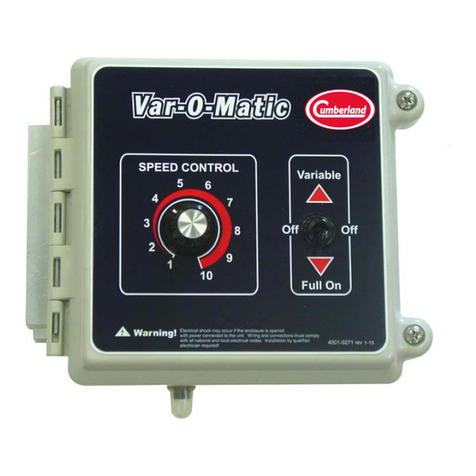
Cumberland
Cumberland Var-O-Matic installation instructions
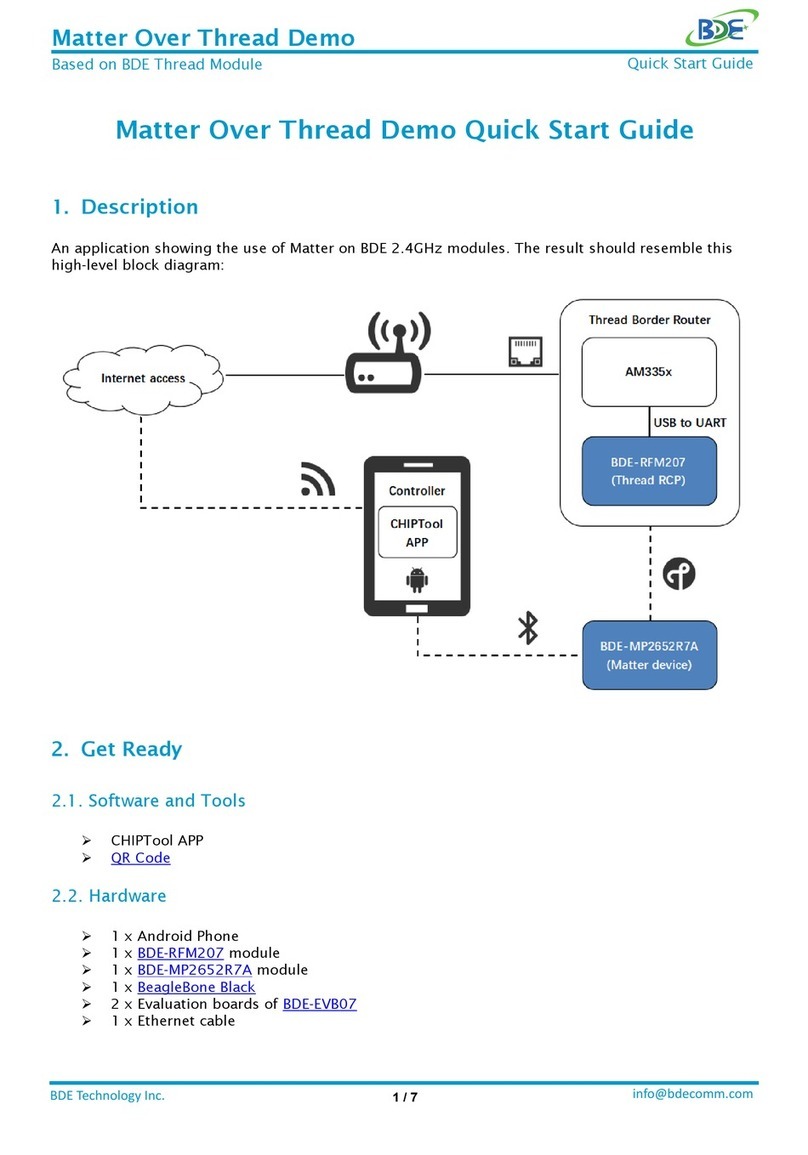
BDE
BDE Matter Over Thread Demo quick start guide
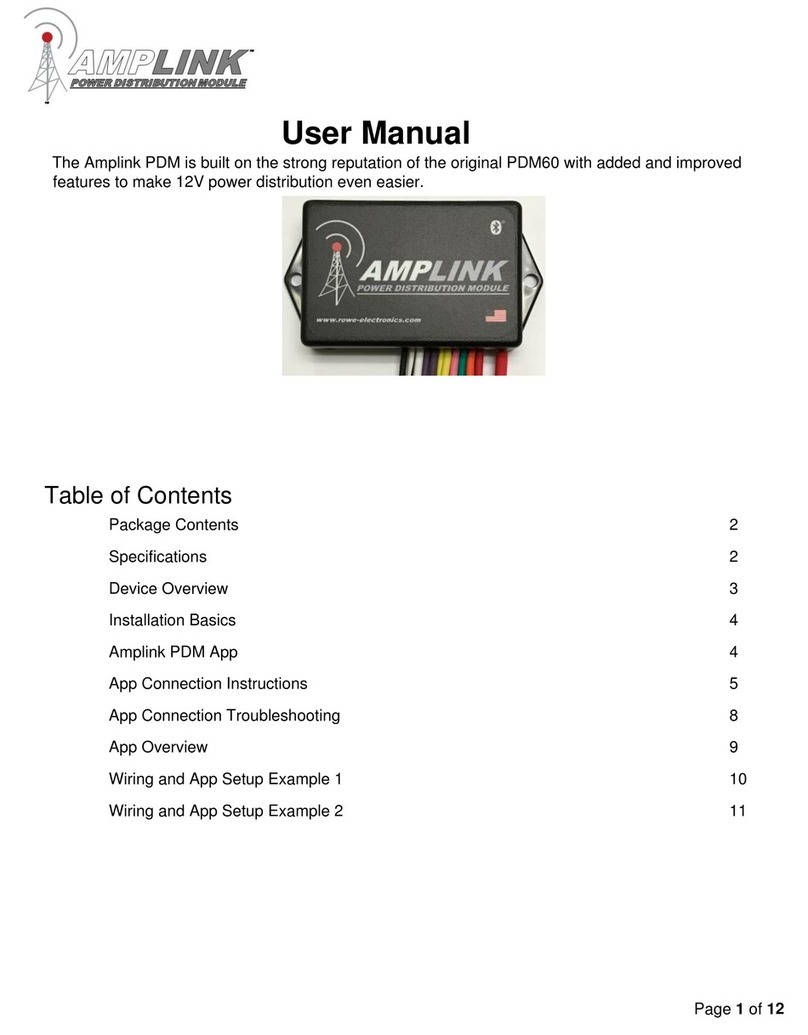
Amplink
Amplink PDM60 user manual
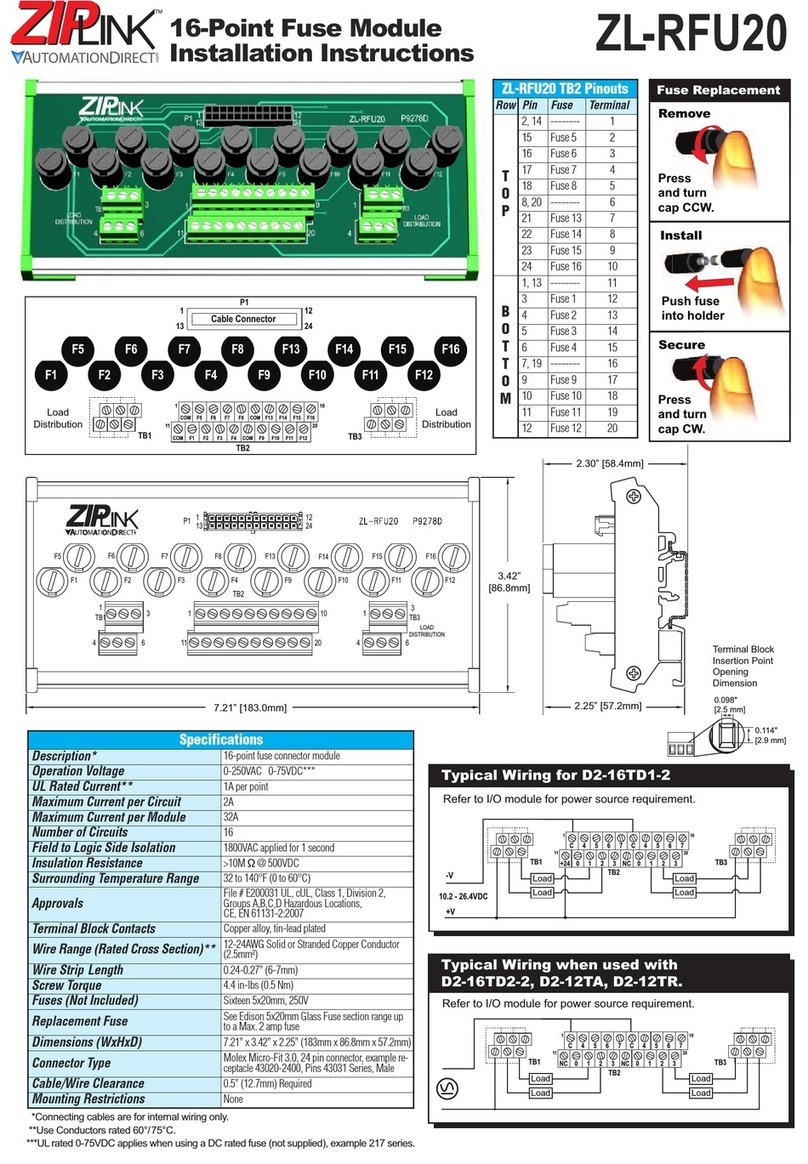
zipLink
zipLink ZL-RFU20 installation instructions
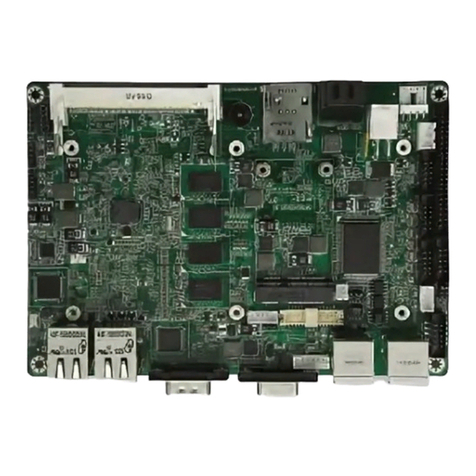
Arbor Technology
Arbor Technology EmCORE-i290H Quick installation guide

Salvarani
Salvarani TeeJet 844-AB Programming manual

Dell
Dell UPS 2700R Series Getting Started With Your System

New England Arbors
New England Arbors NEBNext Ultra E7442L instruction manual
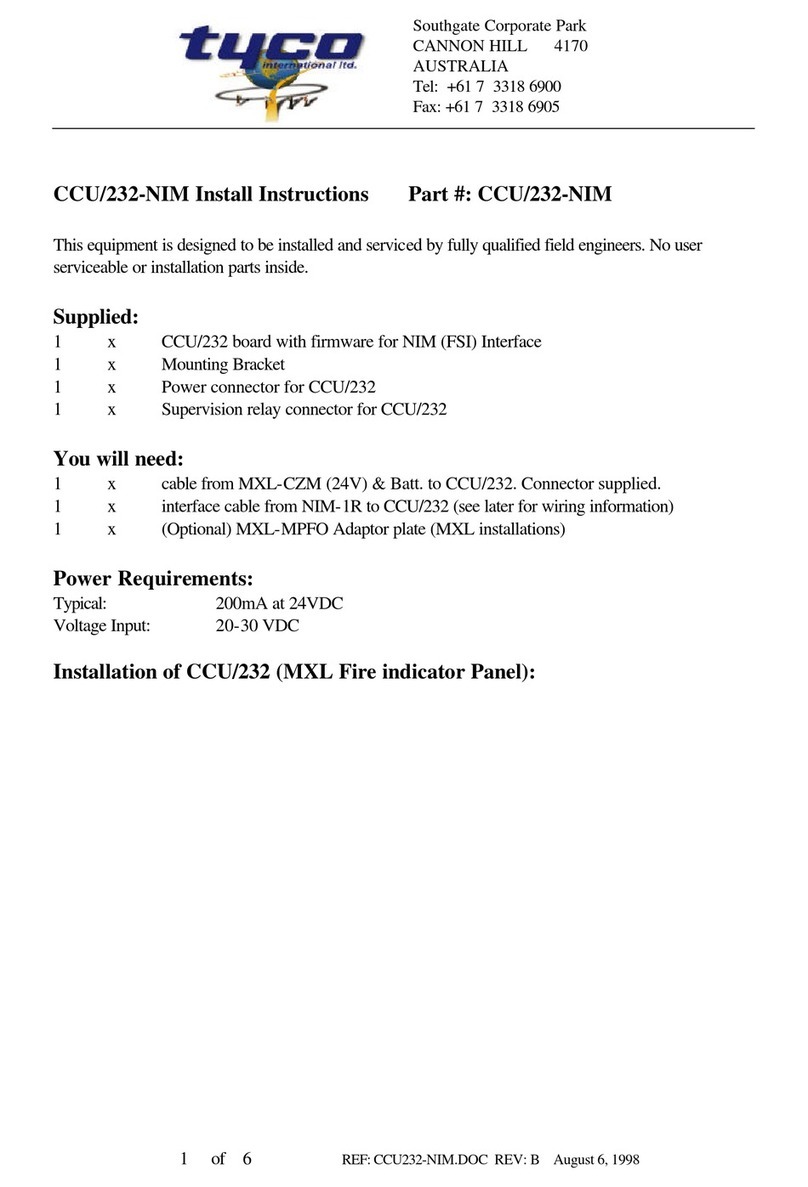
Tyco
Tyco CCU/232-NIM Install instructions
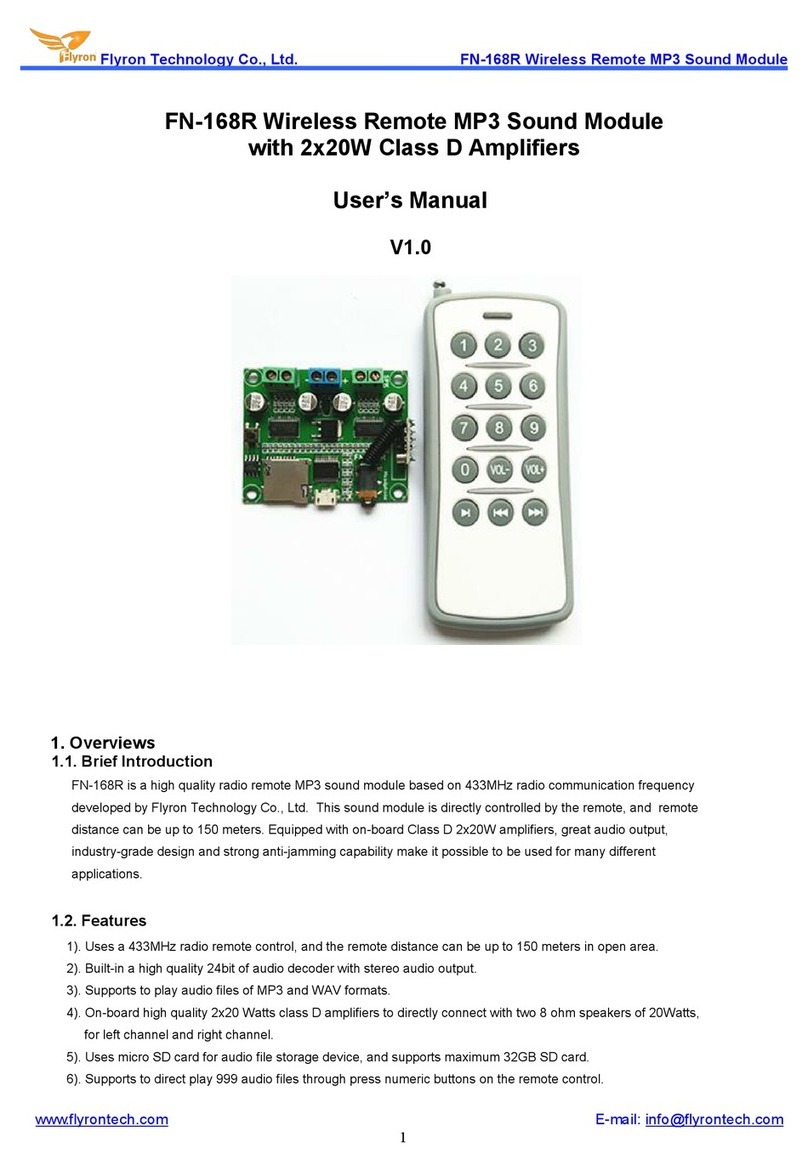
Flyron Technology Co., Ltd.
Flyron Technology Co., Ltd. FN-168R user manual
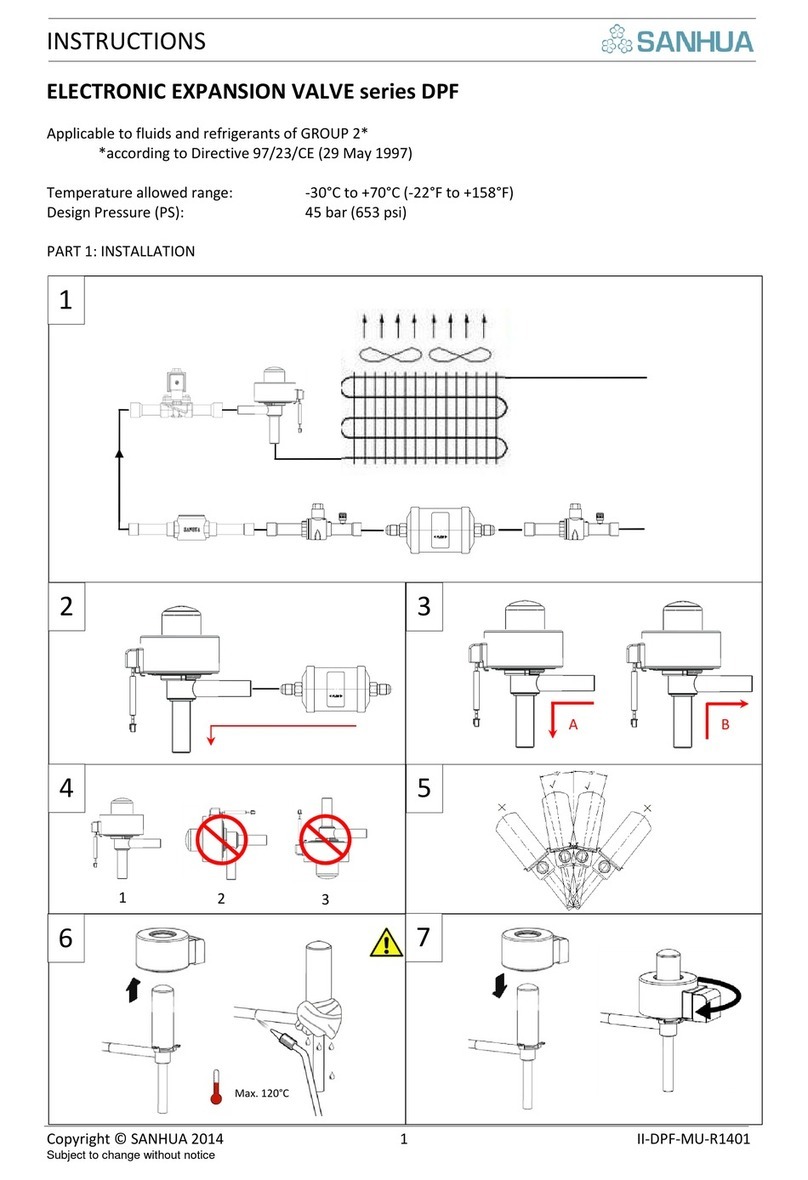
Sanhua
Sanhua DPF Series instructions
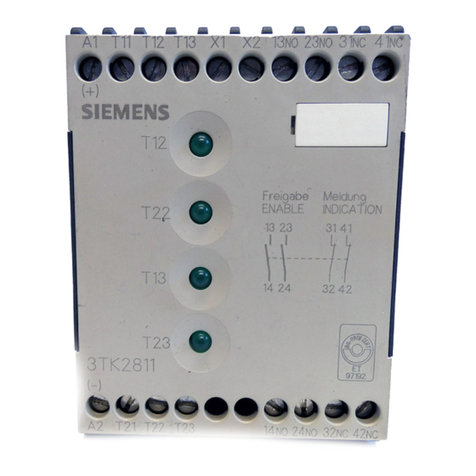
Siemens
Siemens 3TK2811 instructions
